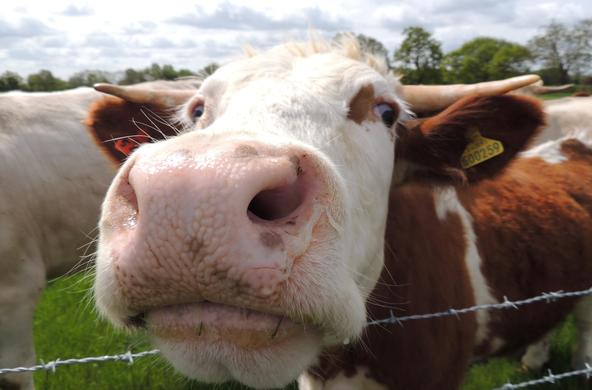Increasingly we recognize the impacts of small airborne particles on our health. Breathing particles less than 2.5 microns in diameter, known as PM2.5, is estimated to cause more than 3 million deaths per year worldwide.
Small particles can lodge deep in lung tissues and are associated with a higher incidence of heart disease and stroke. P2.5 is statistically associated with high blood pressure. Along with ozone and NOx, particulate air pollution is associated with decreasing life expectancy across the United States.
A recent paper predicts 150 million excess deaths from PM2.5 during this century. In the case of PM2.5 what you can't see can hurt you.
PM2.5 levels are elevated in many of the world's cities, where they derive from industry and automotive transport.
What is less well known is that the largest human source of PM2.5 stems from agriculture activities, especially the inadvertent loss of ammonia from fertilizer and animal wastes.
In the atmosphere, ammonia gas reacts with sulfur dioxide (SO2) and nitric acid (HNO3) vapors to form "secondary" aerosol particles of ammonium sulfate and ammonium nitrate. In contrast, particles emitted directly to the atmosphere, such as soil dusts, are known as "primary" aerosols.
Higher burdens of ammonia in the atmosphere from agricultural activities are detected in the Central Valley of California, the Mid-Western U.S., and eastern North Carolina. The secondary aerosols forming from ammonia from agriculture are estimated to increase health-care costs in downwind areas, equivalent to one-half the value of the agriculture exports from the Midwestern United States.
Deposition of ammonia-derived aerosols is increasing across the U.S. and now accounts for 65% of all nitrogen deposited from the atmosphere.
Currently the Environmental Protection Agency (EPA) does not recognize ammonia as a "criteria" pollutant, meaning that its emission is essentially unregulated.
Emissions from agricultural activities are diffuse and episodic, so they would be difficult to regulate. Nevertheless, it is increasingly clear that we will not make much progress in reducing levels of PM2.5 without regulating the emissions of ammonia.
In this era of deregulation, we must remember that the role of government is to ensure a better life for all citizens.
References
Baek, B.H. and V.P. Aneja. 2004. Measurement and analysis of the relationship between ammonia, acid gases, and fine particles in eastern North Carolina. Journal of the Air & Waste Management Association 54:623–633.
Li, Y and 8 others. 2016. Increasing importance of deposition of reduced nitrogen in the United States. Proceedings of the National Academy of Sciences U.S. doi: 10.1073/pnas.1525736113
Lelieveld, J., J.S. Evans, M. Fnais, D. Giannadaki and A. Pozzer. 2015. The contribution of outdoor air pollution sources to premature mortality on a global scale. Nature 525: 367-371.
Paulot, F. and D.J. Jacob. 2014. Hidden cost of U.S. agricultural exports: particulate matter from ammonia emissions. Environmental Science and Technology.
Pope, C., M. Ezzati, and D.W. Dockery. 2009. Fine-particulate air pollution and life expectancy in the United States. New England Journal of Medicine 360: 376-386.
Shindell, D. 2018. Nature Climate Change, in press.
Warneck, P. 2000. Chemistry of the Natural Atmosphere. Academic Press/Elsevier, San Diego
Whitburn, S. and 9 others. 2016. A flexible and robust neural network IASI-NH3 retrieval algorithm. Journal of Geophysical Research Atmospheres 121: 6581-99.
Yang, B.-Y. and 6 others. 2018. Global association between ambient air pollution and blood pressure: a systematic review and meta-analysis. Environmental Pollution 235: 576-588.
Photo credit: Bob Travis





